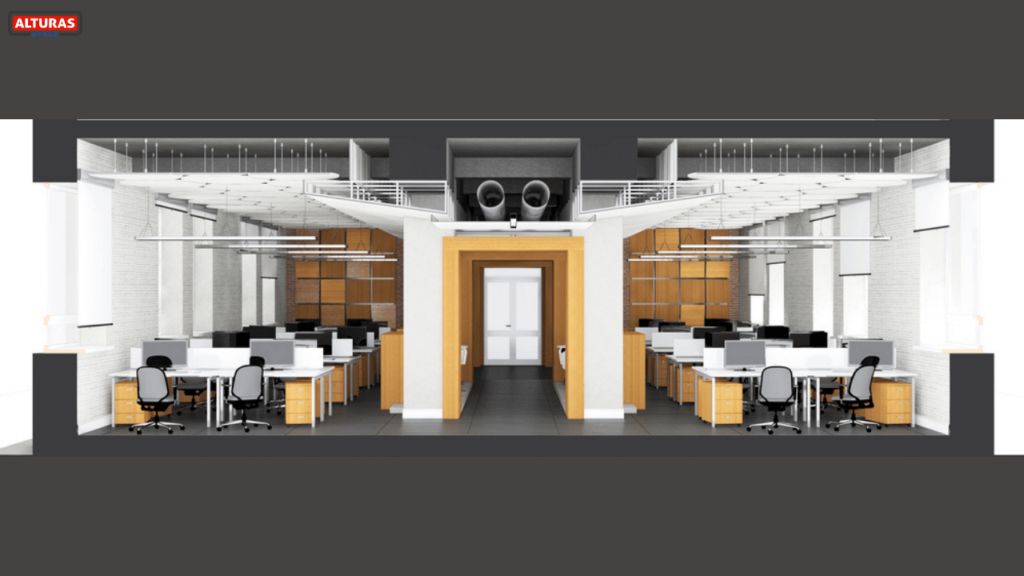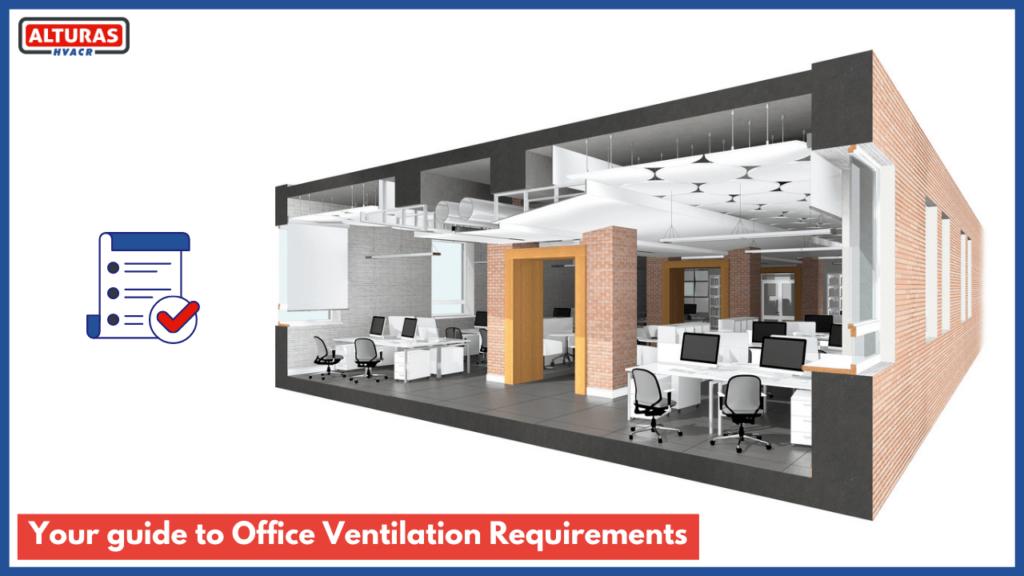Office ventilation is an important factor to consider when designing and maintaining a healthy and productive workplace for your employees. The quality of air inside an office can impact the health, comfort, and well-being of employees. It also directly impacts the employee’s ability to focus and work efficiently. Therefore, the proper ventilation system is inevitable to ensure that your office meets the ventilation requirements set by relevant building codes and safety standards
In this article, we will provide a guide to office ventilation requirements, including the factors that influence them and the steps you can take to improve ventilation in your office. This way it’s easy to assess whether your office building complies with the standards or not.
Benefits of Good Office Ventilation
Here are the top benefits of good ventilation and air quality at the workplace.
Increase Employee Comfort
Nobody wants to work in an unpleasant atmosphere and shiver or sweat all day in front of the computer. A comfortable and pleasant environment increases the productivity of the employees.
Minimize Sick Time
Some employees may have eye discomfort, inflammation, or breathing issues due to poor indoor air quality. It may also exacerbate specific pre-existing health issues like asthma. Poor ventilation is also linked to sick building syndrome. It is a condition in which workers or students report various symptoms while they are within a building but not when outside of it. That is why ventilation is critical.
Maintain humidity
One of the advantages of an excellent ventilation system is the capacity to regulate humidity. ERVs may capture part of the moisture in humidified air, reducing the amount of energy needed to humidify new air. Also, Mold, mites, fungus, bacterial development, and viruses may be reduced by keeping humidity levels between 40% and 60%. This may help to avoid health issues and allergic responses.
Office Ventilation Requirements

To ensure that your office meets ventilation requirements, you need to consider the following factors:
Air Change Rate (ACR)
The air change rate is the number of times per hour that the entire volume of air in a space is replaced with fresh outdoor air. The recommended ACR for an office is 15 cubic feet per minute CFM per person or 20 CFM per person if smoking is allowed in the office. The ACR can be calculated by multiplying the volume of the office (length x width x height) by the ACR required for that space.
Minimum Outdoor Airflow
The minimum outdoor airflow is the amount of outdoor air that must be supplied to an office to ensure that the air is fresh and healthy. The recommended minimum outdoor airflow for an office is 20 CFM per person.
Filtration
Air filters are designed to capture pollutants and contaminants in the air. The recommended minimum efficiency rating for filters used in office ventilation systems is MERV 13. The higher the MERV rating, the more efficient the filter is in capturing smaller particles.
Humidity
The recommended indoor humidity levels for offices are between 30% and 60%. High humidity levels can promote the growth of mold and bacteria, which can affect the air quality in the office.
Temperature
The recommended temperature range for offices is between 68°F and 76°F. This range provides a comfortable working environment and helps to maintain good air quality.
Factors that Influence Office Ventilation Requirements
Several factors influence office ventilation requirements including:
Office occupancy
The number of people working in an office impacts the amount of fresh air needed to maintain air quality. Generally, the more people work in an office, the more fresh air is required.
Building design
The design of the building also affects office ventilation requirements. Factors such as the size of windows, ceiling height, and the location of the exhaust can impact the amount of fresh air that can enter an office.
Nature of office activities
The type of work-related activities performed in an office can affect the ventilation requirements. For example, activities that produce fumes, dust, or other contaminants require higher ventilation than activities that do not involve dust, smoke, fumes, etc.
Location
The location of an office can also impact ventilation requirements. Offices located in polluted areas, high-traffic areas, or near industrial facilities may require higher ventilation rates to maintain good air quality.
Strategies to Improve Office Ventilation

Improving ventilation in your office is not only essential for the health and well-being of your employees but also helps to improve workforce productivity and efficiency. Here are some steps and strategies to improve ventilation in your office:
Keep a check on your HVAC system:
HVAC preventive maintenance from time to time is important to ensure the smooth functioning of your HVAC system. Therefore is particularly essential if it has been inactive for some time.
Clean the air ducts.
Another strategy is to clean and disinfect the air ducts. Call Commercial HVAC Contractors for thorough maintenance and cleaning of air ducts.
Open Windows
One of the simplest ways to improve natural ventilation in your office is to open windows. This allows fresh air to enter the office.
Install Exhaust Fans
Exhaust fans help to remove stale and humid air and pollutants from an office. They can be installed in restrooms, kitchens, and other areas where fumes and odors are produced.
Keep your air filter clean
Air filters are an essential component of your HVAC system. Filters are an effective method to help clean indoor air since they catch dirt and pollutants that would otherwise pass through vents, ducts, and buildings. They help minimize energy usage by reducing dirt accumulation on heat transmission equipment.
Dirty and clogged air filters can cause the system to work harder than it should. Many components of an HVAC system are affected because of the performance of air filters, Therefore, it is crucial to clean your air filters every few months.
Use Air Purifiers
Air purifiers can be used to remove pollutants and contaminants from the air. They can be especially helpful in offices located in polluted areas or near industrial facilities.
The Legal Requirements For Workplace Ventilation
In the United States, workplace ventilation is governed by the Occupational Safety and Health Administration (OSHA). Employers must provide adequate ventilation to maintain a safe and healthy work environment, complying with OSHA standards. Ventilation systems should be designed, operated, and maintained to ensure proper air quality and worker well-being.
Create the Best office environment with Alturas HVAC contractors
A little bit of effort goes a long way to meeting office ventilation requirements and running a cleaner, healthier office. Learning and encouraging the best workplace ventilation requirements will ultimately help increase the overall value of the building.
To ensure that your office building has adequate ventilation, hire Alturas Los Angeles HVAC contractors. Our team of HVAC installers is well-equipped to fulfil all office ventilation requirements. We provide office ventilation maintenance services to improve the overall efficiency of your system. Call our HVAC company right away to fulfil all your ventilation needs.

